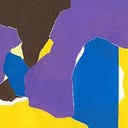
https://www.metmuseum.org/art/collection/search/631208
1. Introducing “the world” as the third layer
The relationship between “the people” and “the government” seems to be a two-layered structure with an underlying problem. Consider it from a broader perspective. The existence of a nation requires not only the people and the government but also the environment that surrounds them.
We continue our thinking by introducing “the world” as a third element, a new layer, which constitutes the power structure in the state.
This “world” can mean international society or nature and environment. It is a general term for all factors (= externalities) other than the state ( the people + the government). We should include the “world” outside the country in its power structure. In this sense, there are three layers: the world, the people, and the government (legislative, administrative, and judicial).

In this structure, the “people” control the “government,” and the “world” controls the “people.” It is a top-down structure with the world as the top layer above the government. The “world” becomes supreme because the “people” cannot control it by voting or public opinion. Thus, the “world” becomes the king. However, suppose “the world” is a natural disaster. People are unlikely to neglect it. Therefore, this structure looks unnatural.
Thus, we assume the intervention of the “government,” the lowest level (object level), into the “world,” the highest level (meta-level). This is a structure in which the three entities control each other. In the following, we will examine whether this structure fits the real world.

the World (W), the People (P), Government (G)

The interaction of these three has a strange structure, like Escher’s (or Penrose’s) infinite staircase. The meta-level and the object-level are in circulation. All the graphs described as flattened triangles in the following sections contain this kind of strangeness.

If you follow the character’s path, the front and back relationships will be reversed before you know it.
Although these structures determine the hierarchical relationship locally, they cannot define it as a whole. In the rest of this essay, we will use that structure as an expression of the conditions (1), (2), and (3) of the division of power.
Let us clarify the difference between the strange structure of the three-layer cycle (the layers and arrows that make it up) and the tripartite separation of powers. To avoid the idea of being banalized, we will give a metaphor.
Photoshop, the famous image editing software, has the concepts of “layers” and “channels.” Layers are the concept of constructing an image by piling up images as layers. The idea of a channel is to control the image by penetrating the layers and acting vertically.
In this paper, “the people,” “the government,” and “the world” are “layers.” The images of “channels” are the arrows that represent the “signal directions” that control these layers.


Next Article: Interlayer Control and Arrow Direction
Credits: Original idea by Asaki NISHIKAWA, Draft written by Toshihiro FURUYA, Drawing by Yoshimi KIKUYA, Simultaneous editing by VECTION
